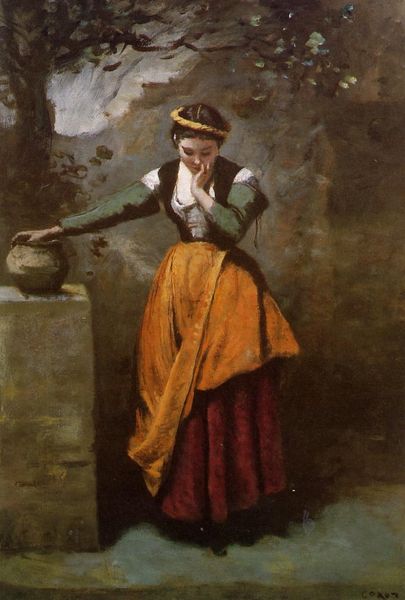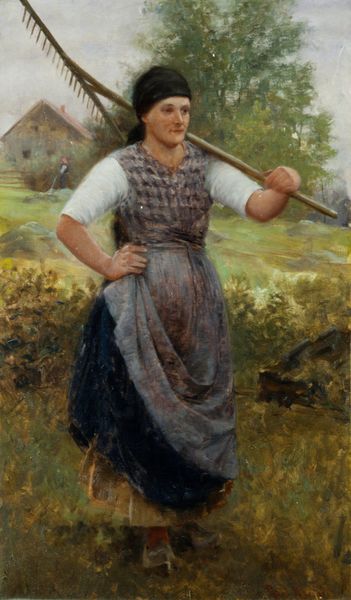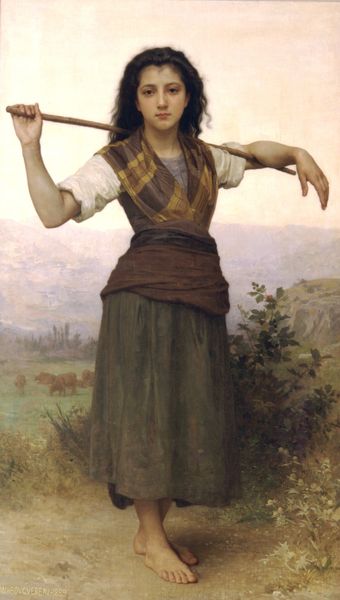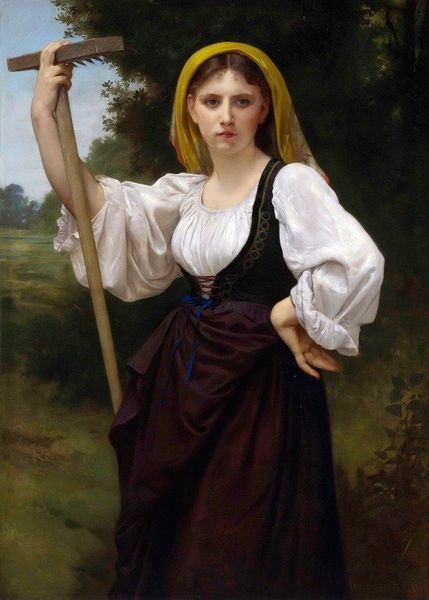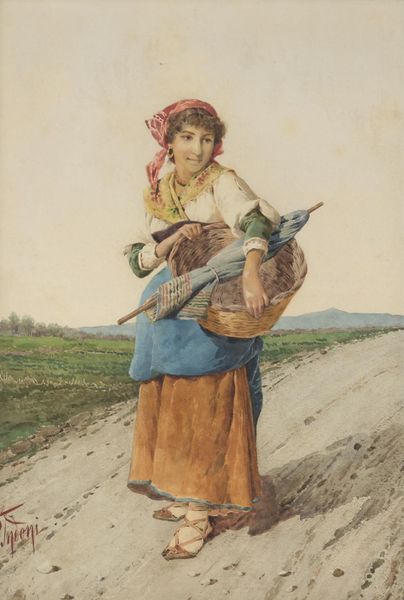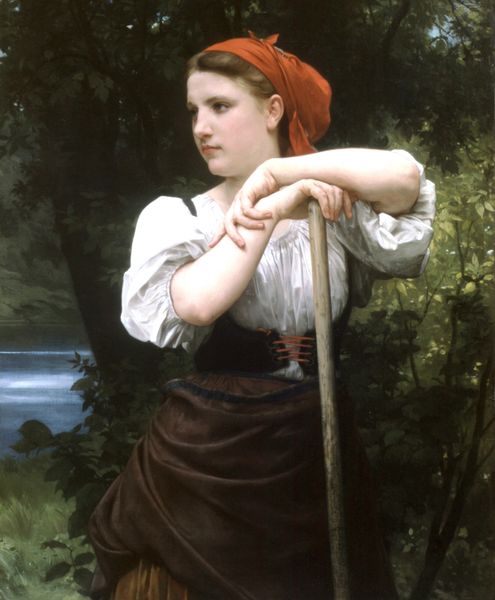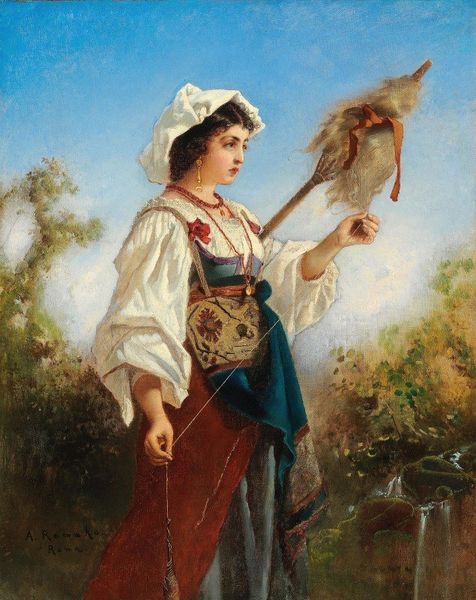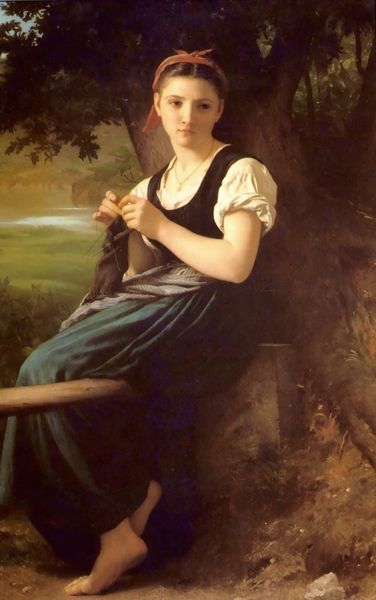
painting, oil-paint
#
portrait
#
painting
#
oil-paint
#
landscape
#
figuration
#
oil painting
#
romanticism
#
genre-painting
#
portrait art
#
fine art portrait
Copyright: Public domain
Curator: We're looking at "Gardener Girl", an oil painting by Károly Lotz. Editor: It’s instantly captivating! The subject, this young woman, seems so grounded, literally. I mean, look at her bare feet on the path. But there's also a distinct feeling of self-possession in her stance, in the tilt of her head, that gives a subtle symbolic feel to her connection to earth. Curator: Absolutely, the "gardener girl" emerged as a recurring figure in 19th-century art. In Lotz's version, she represents an interesting mix: On the one hand, this idyllic connection with the rural world, which was very popular with audiences wanting to reconnect with what they considered 'authentic' national traditions; but also as the new "worker" or servant class, which starts becoming more socially visible in urban centers and through popular media such as imagery and printed texts. Editor: I think you can read that sense of rural laboring even through the imagery: She’s holding a rake, walking, the implication is work and effort. At the same time, her clothing and accessories still carry echoes of folk clothing, loaded with national symbolic meaning – for a country that was defining itself at that moment. The scarf over her head, her vest… These objects become charged signs. Curator: Definitely. Beyond the romantic or pastoral themes, you see an interest in what we now call "genre painting," looking to the countryside to legitimize the visual field, and providing material to the romantic and political artistic landscape that was so visible in that historical moment, which was not yet truly institutionalized as "art." The Romantic aesthetics really feed into this need. Editor: I find the barefoot aspect so revealing. It speaks volumes – both about the real conditions of labor but also as part of the cultural imaginary where the peasantry becomes central in consolidating the country’s shared imagery, its folklore. Curator: What stands out for me is the visual representation of this very construction of "Hungarian-ness" in the era. Lotz shows how this ideal, idealized figure really has emerged to function almost as an "embodiment" of cultural identity for the moment. Editor: Well, I am left with an understanding that paintings such as "Gardener Girl" is a lens through which we are now allowed to analyze art’s influence on a specific social landscape and what imagery had influence at that period in time. Curator: A really thought provoking composition from Károly Lotz!
Comments
No comments
Be the first to comment and join the conversation on the ultimate creative platform.

